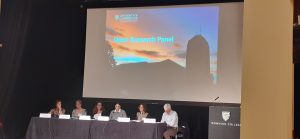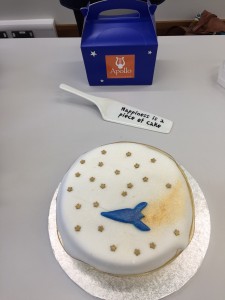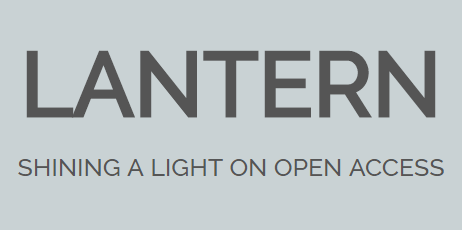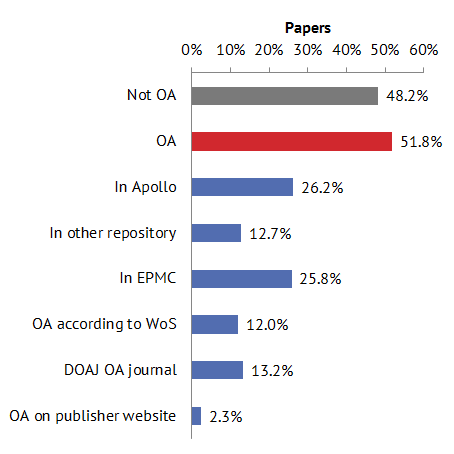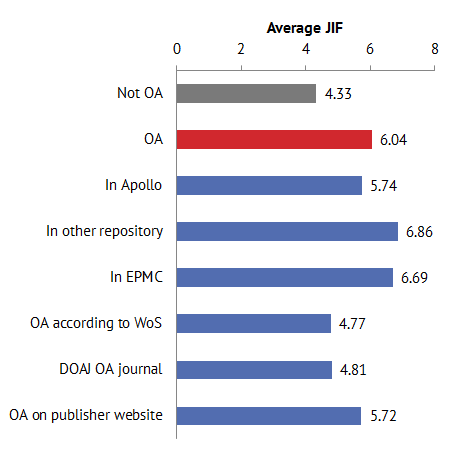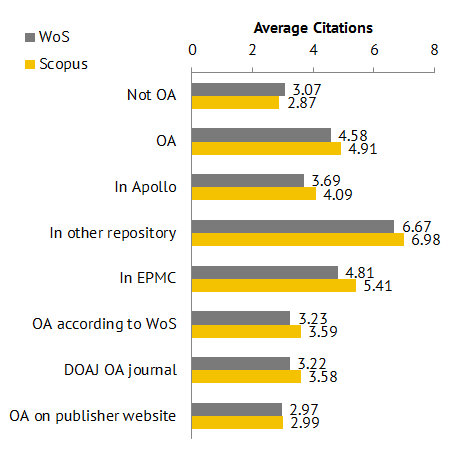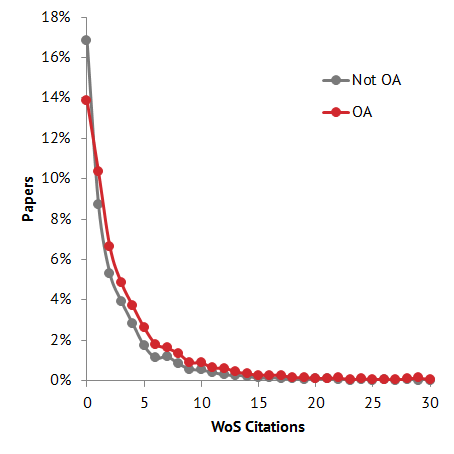This post was written for Hindawi for Open Access Week and published by them on 28 October. It is reposted here.
Recently I spent a day in two consecutive weeks travelling to London to meet with colleagues to discuss the implementation of the Wellcome Trust (COAF) and RCUKOpen Access policies. In both cases the discussions were centred on compliance with their policies.
Certainly it makes sense that a funder should ensure that its policies are being implemented properly. But this focus on compliance raises the more fundamental question about whether we are actually achieving the underlying goal of these policies – which is to open up access to UK research so more people can access, read and use this work.
After all, having huge swathes of research in repositories under embargoes* or spending literally millions of pounds annually to make particular articles in subscription journals available open access is not in itself the end goal.
We should be taking stock. Have the past three and a half years of the RCUK and over a decade of the Wellcome Trust policies meant our researchers are more engaged in open access? Has there been a movement by publishers towards flipping their journals? Indeed, is UK research being read and used more now? These are very pertinent questions that simply do not appear to be discussed at the moment.
*Cambridge has managed to address this issue by providing a Request a Copy button – see here.
Big bucks
There is a lot of money in this ecosystem. Cambridge University has been allocated £1,269,318.59 by RCUK in the 2016-2017 year, and have a £403,138 underspend which will be directed to this year’s Open Access activities. In addition Wellcome Trust have allocated us £902,243.
So Cambridge University has £2,574,699.59 allocated by funders to pay for Open Access APCs and related staff and systems costs (we recently made all of our expenditure available). Cambridge University spends about £4.8 million annually on subscriptions, so the cost for Open Access at our institution is over half of our subscription cost.
These are serious amounts of money. Surely it is a good idea to ask whether this process is actually achieving what it set out to do.
So what has actually happened?
Embargo changes
The RCUK Open Access policy has allowances for green Open Access with a sufficient embargo period and the decision tree at the Office of Scholarly Communication reflects the actual wording and rules of the policy – that is choose green options if you can. However the emphasis of RCUK is decidedly towards gold Open Access – see their decision tree which is actually slightly misleading.
So when the RCUK announces a policy where cash for article processing charges will flow to publishers dependent on embargo periods, what happens? The embargo periods lengthen.
According to a study published this year “What does ‘green’ open access mean? Tracking twelve years of changes to journal publisher self-archiving policies” (Open Access version here) there is “a clear link between the introduction of Gold open access and the increasing restrictions around Green open access”. The study also includes a graph mapping embargo periods over time which shows a very clear and defined ‘Finch effect’.
This was entirely predictable. When the RCUK Open Access policy was announced in response to the Finch Report I wrote (in my previous role) “Clearly it is advantageous for journals to offer a hybrid option and to extend their embargo periods in response to this policy.” And they did.
Springer and Emerald both extended their embargoes beyond the RCUK limits. (Of course Springer has since redeemed itself by experimenting with new business models).
Those embargo extensions were particularly galling at the time for me because they were worldwide and affected everyone – including in Australia, where I was based. Other publishers have responded to the RCUK rules by creating particular embargoes for UK authors. Elsevier is a clear example.
Institutional pressure
About the time the RCUK policy came into force I wrote about the difficulty of anyone staying up to speed on copyright agreements. Since then it has got worse. At Cambridge we do not expect our researchers to try and wade through this – we provide a service to help them. But this means staff and that costs money.
The pressure on research institutions to manage the UK Open Access policies is significant. Analyses of the total cost of publication (Open Access version here) associated with the administration of making research open access show a huge staffing load. The cost of processing a gold Open Access article was shown to be 2.5 times that for the processes of making an article available in a repository.
The RCUK do allow some of their block grant to be spent on staffing and infrastructure. At Cambridge we have reported that we spent 4.6% of the year’s allocation on staff costs and 5.1% on systems support. The general understanding is that RCUK don’t want the total spend on these costs to be more than 10% of the grant and it appears some institutions have spent more than this in previous years.
This highlights the overall lack of funding for support costs for managing Open Access. There are no specific funds for managing the HEFCE Open Access policy, or the COAF policies. While both the Wellcome Trust and HEFCE provide considerable funds to UK institutions for research, this is not directed to the Libraries. Certainly at Cambridge there is a robust process required to argue for funds to support these types of activities.
The 2012 Finch Report talked about a “transition to open access” and acknowledged that this will mean additional costs. Certainly the funders have channelled significantly more funds to publishers through the institutional block grants, and those institutions are having to channel internal resources to support the staff supporting the policies.
But the Finch Report also mentioned “seeking efficiency savings and other reductions in costs from publishers and other intermediaries”. It is safe to say that this has yet to actually occur.
Taking stock
So, more than four years on from the Finch Report, are we any closer to full Open Access? The answer is yes in the UK – because we have poured millions of extra (taxpayers’) pounds into the system. But if the RCUK policy were to end tomorrow, would the publishing landscape be any different? Has any other country in the world followed this model?
And are the Open Access policies achieving their end goal? Is UK research more visible in the world now? Are people actually finding these articles? Is it being read more?
Is anyone even asking these questions? Who is monitoring this? If we don’t ask and measure these parameters we will never know.
What we do know is we have extended embargo periods, forcing funded researchers down the gold Open Access path, which is more expensive to process in terms of staff time. We have spent millions, the majority of which is spent in hybrid journals – which is itself another issue. And there is little if any evidence that publishers are moving towards fully Open Access models.
A glimmer
Unfortunately the discussions held recently about the Wellcome Trust and RCUK policies were solely focused on compliance. This has become the narrative in the Open Access space in the UK and does nothing to help ‘sell’ the idea of Open Access.
Indeed it would be hugely helpful if there were communication about the underlying goals of these policies and whether they are being met. But the lack of monitoring of these goals means we have nothing to say. We can’t communicate what we don’t know about.
There is some hope. At least one publisher is interested in whether this is making a difference. At the Frankfurt Book Fair last week I attended a discussion of the German Serials Interest Group where a colleague from Springer said that Springer is assessing the success or otherwise of the Springer Compact. They had specifically compared the readership of Open Access articles against subscription only articles. According to this work, the percentage of non-institutional affiliated people reading the Open Access articles was dramatically higher than the subscription-only.
This type of information is hugely valuable to Open Access advocates, and I am hoping that Springer will release these findings publicly.
The team at the Office of Scholarly Communication strongly believe that all Cambridge research should be available, and we are working hard towards that goal (recently celebrating 10,000 submissions to the repository). It would help us enormously if we could offer evidence to our community of the value and benefits of this effort.
Published 3 November 2016
Written by Dr Danny Kingsley
